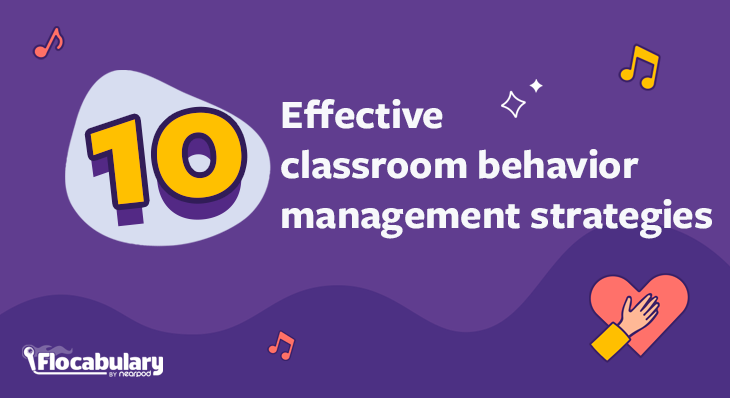
Top 10 effective classroom behavior management strategies
It’s the time of the year when you hear the rallying cry from teachers as they head back to school – it’s their New Year. Top of mind for all teachers is the first few weeks of school and how they can effectively establish a sense of classroom management. Classroom management is the cornerstone of building classroom culture, where students and teachers are equal stakeholders in creating an engaging and effective year together to help students grow academically, socially, and emotionally. Often, the hallmark of a great teacher is the ability to establish such classroom management strategies early in the school year.
What is classroom management?
Classroom management is both an art and a science as teachers work with their students to set expectations for the year. These expectations can revolve around procedures and routines to foster a positive classroom environment. When it comes to routines, kids love them because such processes empower kids with a sense of both agency and achievement.
How has COVID affected classroom behavior?
Part and parcel of setting such expectations is employing behavior management strategies as well. In our post-COVID world, educators have reported that many kids struggle with self-regulation and social skills, which usually help make a classroom hum. The National Center for Education Statistics (NCES) shared last year that 87% of public schools reported that the pandemic negatively impacted students’ socio-emotional development. Furthermore, 84% agreed or strongly agreed that it also negatively impacted students’ behavioral development. With instructional time being a precious commodity in teaching, such issues as disrespect toward teachers/staff (48%), rowdiness outside of the classroom (49%), and student misconduct (56%) cause disruptions that affect all students’ learning environment. In an educational world in which staffing, resources, and training are undersupplied, the reported needs are daunting:
“Public schools reported needing more support for student and/or staff mental health (79%), training on supporting students’ socio-emotional development (70%), hiring of more staff (60%, and training on classroom management strategies (51%).”
– NCES
The importance of classroom routines
So, it’s no wonder that most teachers’ focus centers on establishing such routines and expectations. Dynamic duo Harry and Rosemary Wong have written many award-winning books, such as The First Days of School and The Classroom Management Book, dedicated to teaching practical approaches to classroom management techniques. Harry Wong claims, “Contrary to what many people believe, the number-one problem in the classroom is not discipline—it is the lack of procedures and routines.” In an EdWeek article, he further explains, “In the 1970s, [Jacob Kounin] noted that, in determining whether a classroom runs smoothly, it’s the teacher’s behavior, not the students’, that really counts. It’s all about what the teachers do. That was big. The most important factor he talked about was momentum—when you have a classroom that has procedures and is flowing smoothly, and the kids are learning.”
In establishing such procedures for organizing not only the kids, but the time, the space, and the resources in a classroom, teachers often create a “toolbox” of their tried-and-true teaching materials and activities that help them establish a sense of routine. Teachers lean on this toolbox when searching to diversify student behavior management strategies. One such favorite tool for teachers worldwide is Flocabulary, due to its depth of engaging content and rich multimedia learning experiences that support vocabulary acquisition and reading comprehension across the curriculum.
Captivate students and make learning experiences memorable and interesting through Flocabulary. Sign up below to access the activities and lessons shared in this blog post!
Top 10 effective classroom behavior management strategies
1. Get to know each other
Sounds simple, right? Do make concerted efforts early in the year to get to know one another; students will recognize these intentional efforts. Start by greeting your students each and every day at the door with a smile. See the many viral videos of teachers greeting their students in a student-directed way (a subtle nod to individual preferences). Group dynamics can be strengthened if students feel familiar and comfortable with you and one another. Building that camaraderie and rapport will help establish a classroom culture early and help reinforce everyone’s role in and contributions to the classroom community, leading to more positive student behavior management. Flocabulary and its companion platform Nearpod have several suggested activities to get to know each other.
Use Flocabulary’s Getting To Know Me video lesson to build community in your classroom and model public speaking and active listening skills.
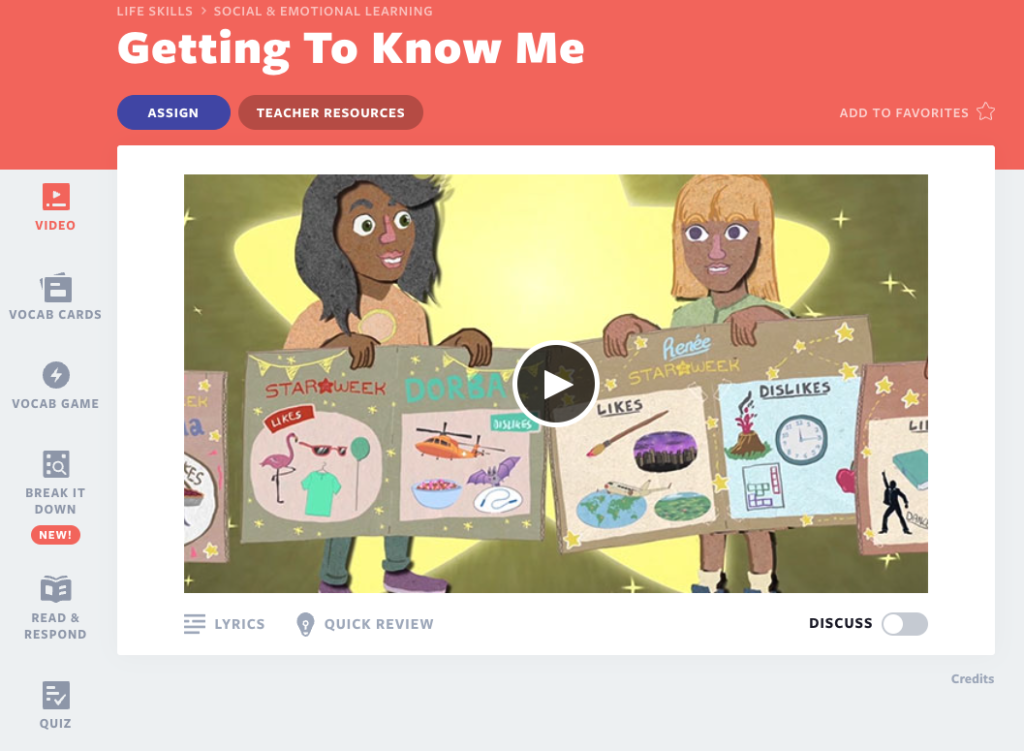
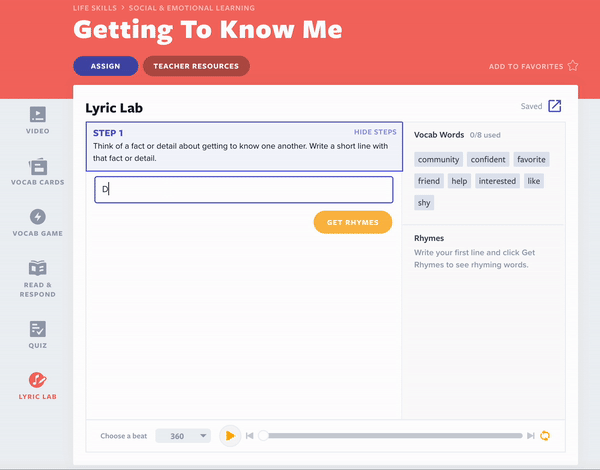
2. Set one golden rule
When it comes to classroom rules, make it less about absolutes and instead initiate a discussion about the guidelines that the classroom wants to follow as a community. Integrating character education into your classroom can significantly benefit students’ personal and academic growth. As a former classroom teacher, I found that respect was a grounding concept that covered all the rest of the typical “rules” that usually end up being listed on a classroom poster. Respect for the school, the classroom, and oneself usually encompassed the nitty-gritty around caring for resources, treating each other kindly, and trying one’s best. So try setting just one golden rule when it comes to establishing classroom management and preventing disruptive behavior.
Check out Flocabulary’s video and accompanying activities on Respect for grades K-5.

3. Have clear expectations
As a teacher, you probably have some best practices as well as non-negotiables. Discuss these early and often to socialize your expectations (and to hear students’ opinions and thoughts on your classroom management strategies). Expectations can be set around how the classroom flows, how classmates treat one another, what is considered good behavior and work habits, and what level of effort is expected.
Together, you can better organize the people, the space, and the day:
- Where are pencils kept?
- How are resources organized and distributed?
- How does each morning begin?
- How do transitions work between subjects and/or periods?
- How is participation gauged?
- What types of checks for understanding are used?
Include Flocabulary’s Time Management video into your lesson plans to help students learn how to set themselves up for success by managing their time for the week.
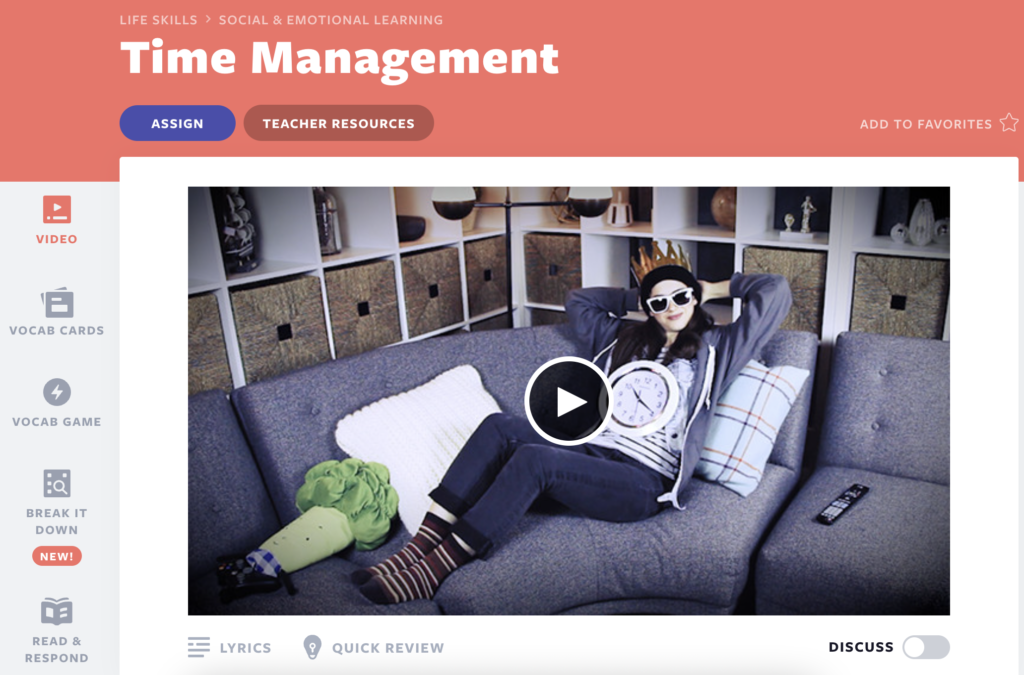
4. Set a schedule
Consider reviewing your daily schedule with your students each day so that they can anticipate transitions and manage their time accordingly. Do post the schedule in a shared space. Schedules are a key component of establishing routines – students ought to know what to do in the first five minutes of class – not a minute to spare! With this shared understanding, your students will become more self-directed and employ more self-management.
Flocabulary can be a great resource for morning bell work or as a cool-down activity after lunch and recess. For example, you can include the Week in Rap into your schedule. Every Friday, Flocabulary releases two new videos that wrap up the week’s news in a song. Watch the Week in Rap for Grades 6-12 and the Week in Rap Junior for Grades 3-5!
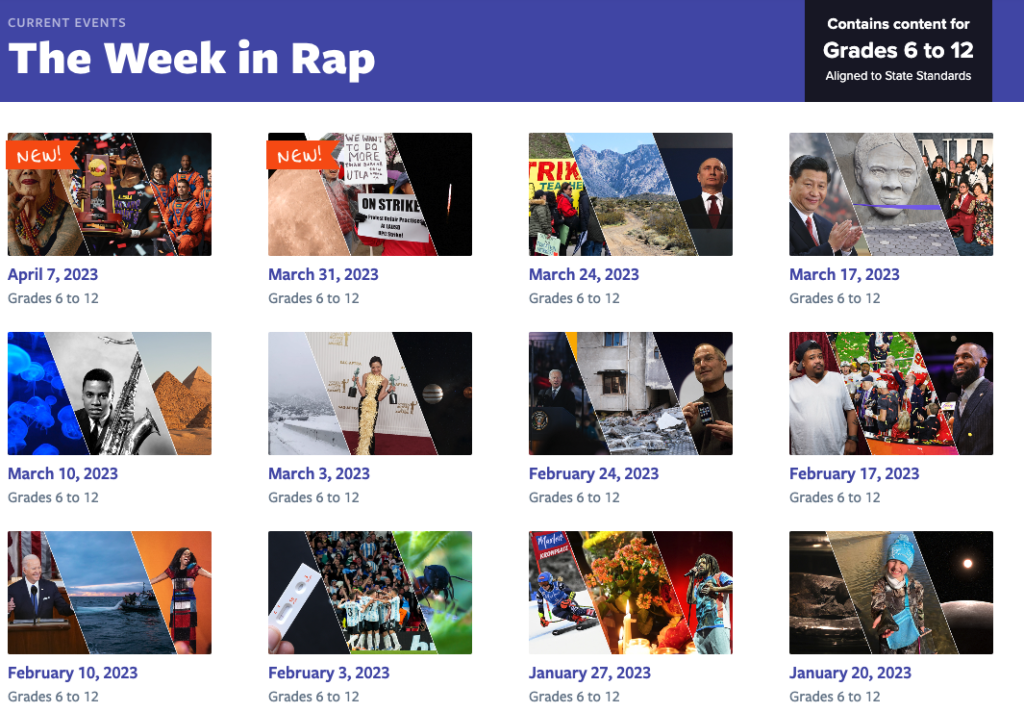
5. Establish tech-friendly practices
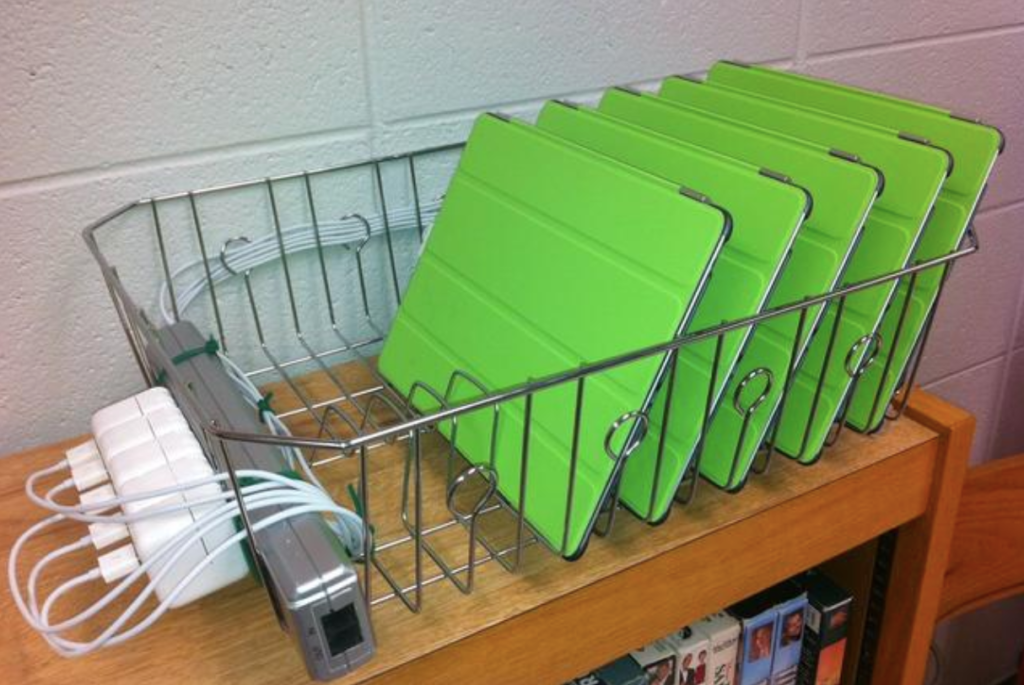
When it comes to technology use, such expectations need to be consistent and concise so that students know what technology is allowed, when it is allowed, and how it should be used. Consider numbering devices like tablets and their charging cords, and then organize and store them in a simple dish-drying rack.
To emphasize classroom management strategies, practice having students check them out as well as check them in while emphasizing how to handle the devices with respect and care. Use Flocabulary’s video-based lesson about Internet Safety to underscore the importance of digital citizenship and media literacy throughout the year.
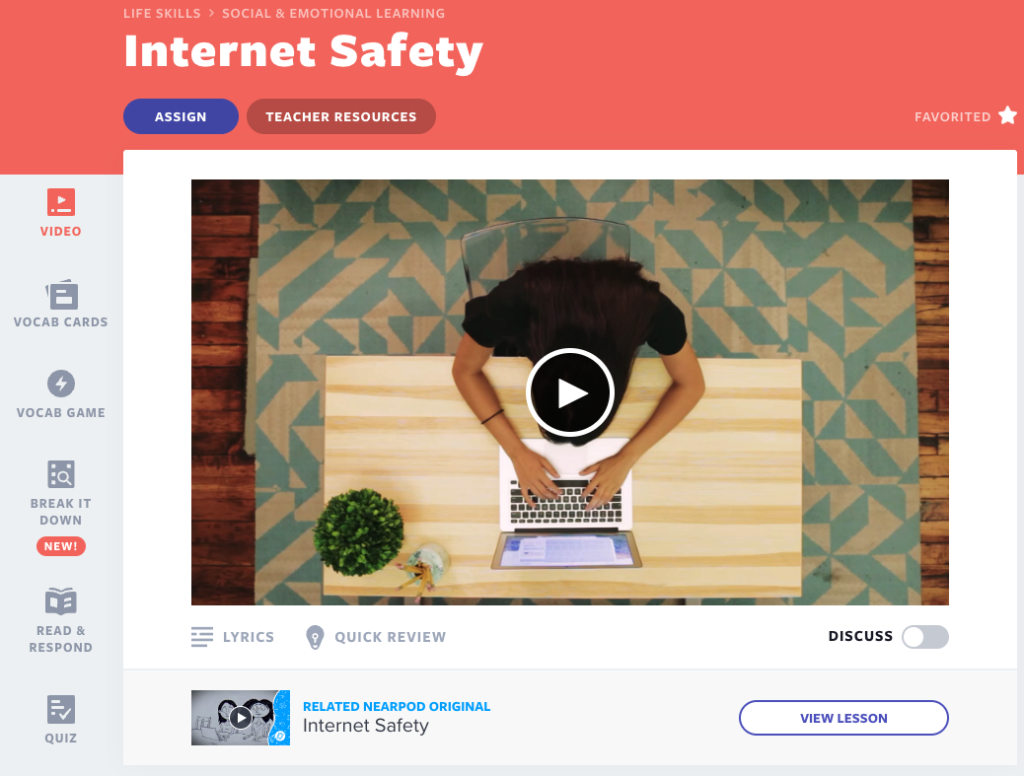
6. Check for understanding
Teachers use many strategies when it comes to assessing students’ behavior and progress, and checks for understanding are just one quick way to get a pulse on a student’s grasp of the learning objectives. Model how you will do such checks for understanding throughout and at the end of each day. Students will begin to rely on them as much as you will as they begin to own their own learning journey. Flocabulary provides three forms of formative assessment with each video-based lesson. Students can complete the Vocab Game, Read & Respond, as well as a quick Quiz. If the assessment is created as an assignment, teachers can monitor completion as well as performance and provide feedback.

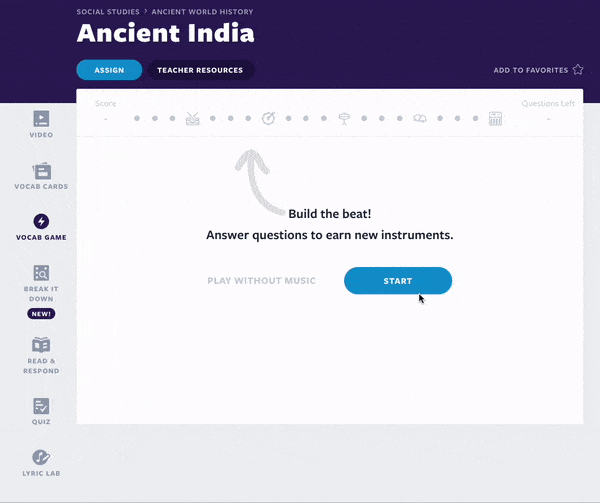
7. Take a differentiated approach
One way to underscore that you know your students well is to address their individual needs. Show your students that you recognize their learning strengths as well as where they might need more support. Have varied resources at your fingertips when it comes to supporting learning objectives, and fold adaptive learning techniques into your instructional practices. Flocabulary provides closed captioning, adjustable video speed, and Microsoft Immersive Reader to further assist students.

8. Provide brain breaks
Brain breaks help solidify learning by giving students period breaks to relax or re-energize. These 3- to 5-minute breaks are designed to help students shift focus or stay focused with the goal of supporting one’s attention, mood, memory, and motivation. Use brain breaks to help maintain students’ attention, prevent inappropriate behavior issues, and build relationships that are meaningful. Flocabulary, with its rich multimedia design, is a great resource to provide students with optimized brain breaks.
Teach students how to practice mindfulness with Flocabulary’s Mindfulness & Meditation lesson video to help students relax and manage stress. The video ends with a short meditation by the artistic-wellness movement Kinetic Vibez.
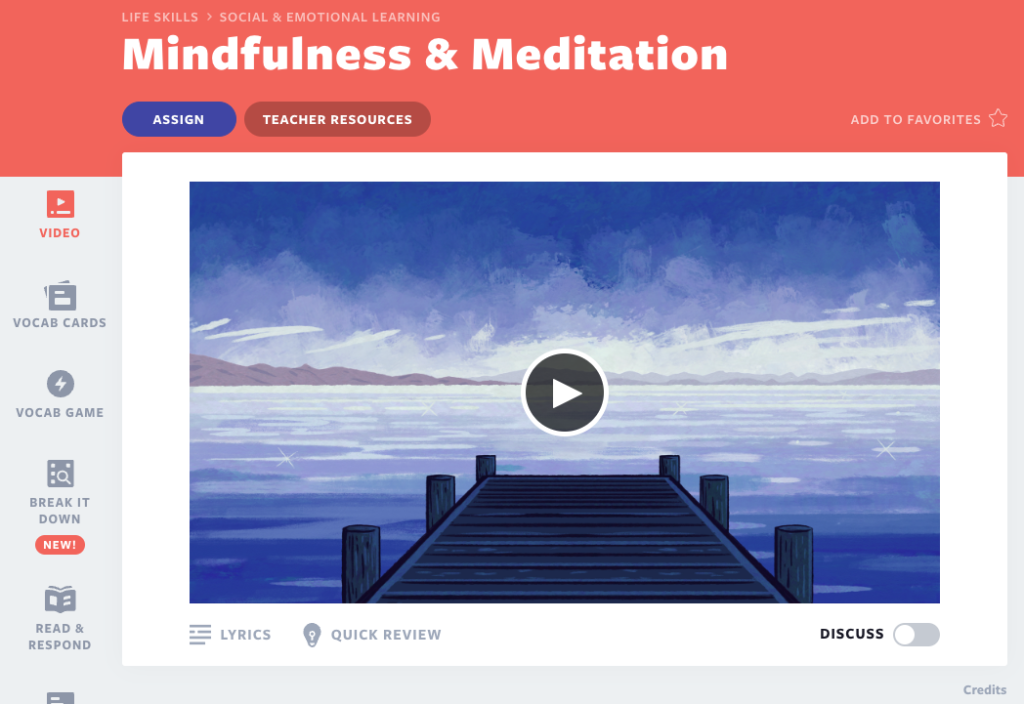
9. Support social and emotional learning
PostpCOVID, we’ve seen more and more attention drawn to the fact that our kids need social and emotional development. According to NCES, 70% of public schools reported needing training on supporting students’ socio-emotional development. Students need to feel confident, ready to set ambitious goals, and bounce back as they encounter obstacles on the way to achieving them. Consider combining music and SEL as a powerful tool for social emotional development. They need to form their identities and feel pride in who they strive to be. They need to work together and appreciate one another in the classroom, the working world, and society at large. CASEL framework lists five core competencies for social and emotional learning (SEL): Self-Awareness, Self-Management, Responsible Decision-Making, Relationship Skills, and Social Awareness. Flocabulary and Nearpod offer many resources and activities to support kids’ social and emotional well-being.
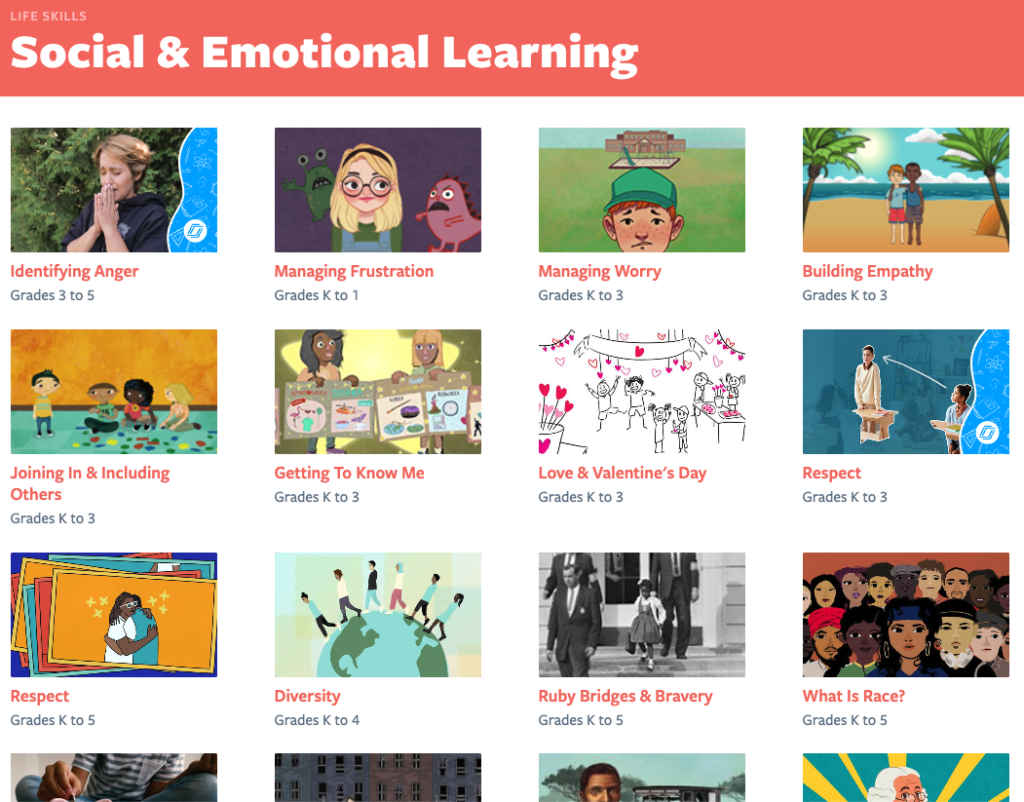
10. Advocate for self-care
Now, this applies to teachers’ well-being too! Teacher attrition is at a drastic and all-time high, so we need our educators to care for themselves as well as their students and their families. Continue to normalize conversations about mental health and mental well-being. Try sharing some of the physiological factors behind the emotional toil, and then help kids identify what works best for them to stay balanced and positive. This is a great way to build relationships with your students to support classroom management skills that promote positive behavioral strategies. While you’re at it, consider what works best for you to stay at the top of your game personally and professionally.
Here are some Flocab lessons teachers and students can use to prioritize self-care:
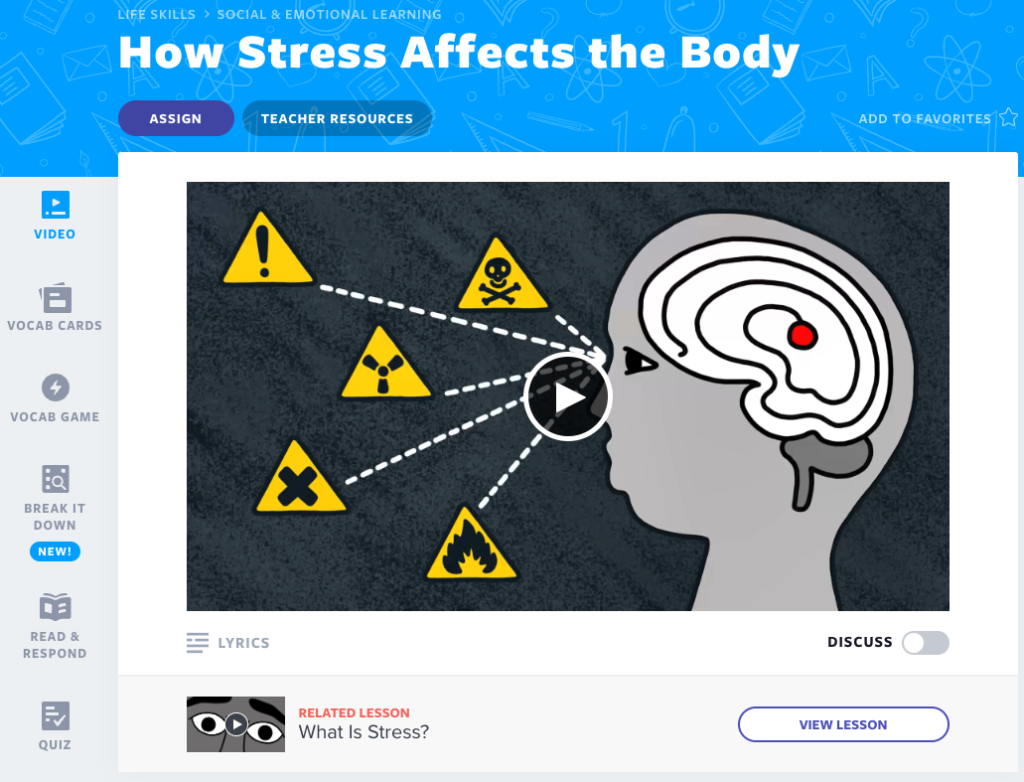
- Self-Compassion: Students will learn what self-compassion is and discover actionable strategies to help cultivate it within themselves.
- *How Stress Affects the Body: In this explainer video, students learn how the earliest humans developed a stress response that is remarkably similar to what they may feel today.
*Nearpod Original videos are only available to Flocabulary Plus users.
Build effective classroom management with Flocabulary
Implementing effective behavior management techniques is essential for maintaining a productive learning environment. A well-structured behavior management system can help address and reduce behavioral problems while promoting positive behaviors among students. By consistently applying these techniques, teachers can create a classroom atmosphere where positive behaviors are recognized and reinforced.
Take the time to plan out your first few weeks of school and make sure to pepper in some of these classroom management examples, tips, and tricks. Repetition will be your friend in establishing such expectations, routines, and procedures. Reinforce the concepts verbally, visually, and through instances of practice. The time spent during this first month of school will pay off exponentially as you foster a strong and positive classroom culture – all of which you are designing to support your students in doing their very best.
Captivate students and make learning experiences memorable and interesting through Flocabulary. Sign up below to access the activities and lessons shared in this blog post!
